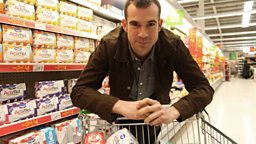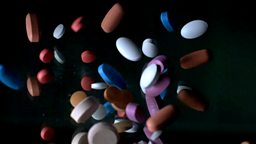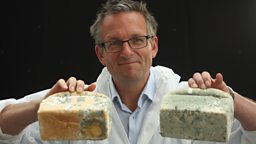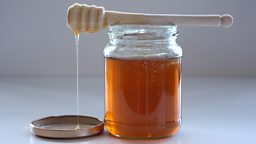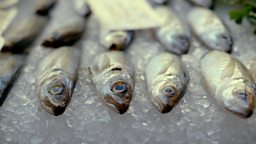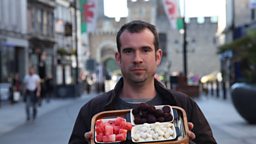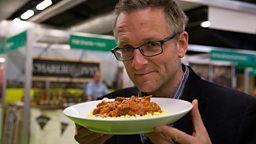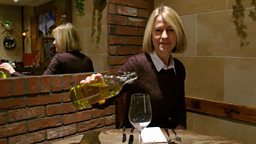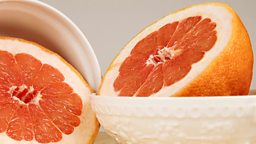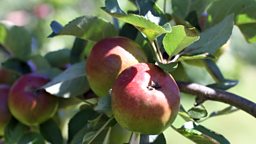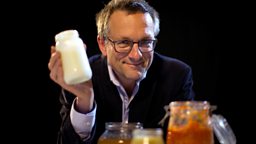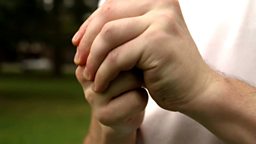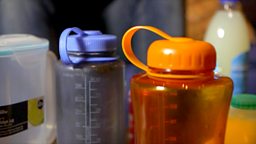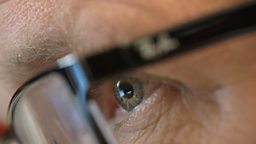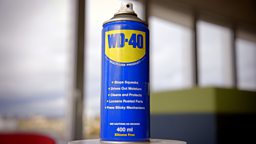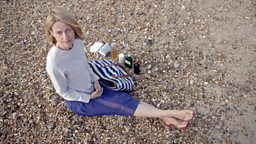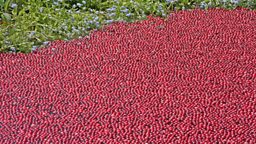Is it safe to eat food past its sell-by date?
In the U.K we throw away 7 million tonnes of food and drink every year, which is £700 for every family. So are there any foods which are safe to eat after their sell by date? Michael Mosley investigates.
Making sense of the label
Food packages are printed with a variety of labels to let us know how long the food inside will last. The different labels have different meanings
- The ‘display until’ or ‘sell by’ dates are aimed at the shopkeepers rather than shoppers. They indicate how long the food should remain on sale.
- ‘Best before’ is about quality rather than safety: after the best before date the food may lose some of its flavour and the texture may not be so good.
- The ‘use by’ date is a really important one to take note of: after this date, the food may not be safe to eat. Foods that can cause harm when they go ‘off’ will be labelled with a use-by date.
Not all foods will have a ‘use-by’ date and many foods, such as lose fresh fruit and vegetables are sold without a date. So, is it safe to eat food that looks like it’s passed its best?
To find out, we left a range of common foods to go past their best for a week in warm weather, then brought in mould expert Dr Patrick Hickey to find out whether anything was edible.
Facts about food waste
- In the UK our food waste amounts to 15m tonnes each year.
- 7m tonnes (47%) comes from household waste.
- 4.2m tonnes could have been saved and eaten and that’s enough to fill 8400 Olympic sized swimming pool.
- Almost half of this food goes straight from our fridges or cupboards to the bin and doesn’t even make it onto our dinner plates.
- Every day 24m slices of bread are thrown out.
- And every year we throw out 86m whole chickens.
- The average UK family wastes £700 each year on food that could have been eaten but is thrown away.
- That is the equivalent of almost £60 a month to the average family or six meals every week.
Foods that can salvaged
Hard cheese
It’s safe to cut off the layer of mould and eat the mould-free cheese beneath it.Cheese is so dense that below the surface there isn’t enough oxygen to allow the mould to thrive (‘blue cheeses’ which are injected with mould as part of their production often need holes drilled into them to let the oxygen in). However, cut off a centimetre or so below the visible mould just to be sure of getting rid of it all.
Jam with a thin layer of mould on top
Jam was invented to help preserve fruit as the high levels of sugar tend to prevent mould growing. But as we’re getting more health conscious ‘reduced sugar’ jams are becoming more popular and these will go mouldy more easily without chemical preservatives. But if you scoop off all of the mould and a few centimetres beneath it, to ensure you’ve captured any spores that are impossible to see, then the jam should be safe to eat.
Bread with small amounts of white and blue mould
The mould starts at the surface and grows down into the bread. The holes in bread mean that the mould can easily spread and so you need to cut off a good few cms beneath the mould before eating the rest. If you use a bread bin, make sure it’s free of old crumbs: if these go mouldy they can release spores which will contaminate the new bread. If you see orange, yellow or black mould spots then throw the bread away as these could be more harmful, and if there’s a lot of mould of any colour then that might give you a stomach ache!
Most fruits
Fruits are very acidic which prevents the growth of harmful bacteria but the acid won’t discourage mould. Most fruits are safe to eat once you’ve removed the mould. But if things have gone severely mouldy then handle them gently. You don’t want to release thousands of spores as you throw the fruit in the bin. However there is one fruit to be wary of - apples. A certain kind of mould common on apples can produce a toxin called patulin which can be dangerous if enough is eaten. It’s not normally a problem in the small quantities found in fruit (it is carefully monitored in apple juice where it could become more concentrated), but it’s best to avoid eating any mouldy parts on an apple.
Food to avoid
Soft cheeses like brie and mozzarella
The ‘mould’ in soft cheese is likely to be bacteria and bacteria are much more likely than mould to do you harm.
Slimy vegetables
Slime is a sign of bacteria, rather than mould, and as mentioned above, bacteria can cause nasty food poisoning or stomach cramps. Apples generally keep for a long time but if the skin is punctured fungal spores can get in and grow inside. They can produce a dangerous toxin called patulin and so mouldy apples should be avoided.
Mouldy nuts and seeds
Nuts that are bitter, soft or powdery could be mouldy. A mould that commonly develops on nuts, especially in a humid environment, may produce a toxin which is one of the most deadly toxins known to man. The mould is called Aspergillus flavus, and the toxin it produces, aflatoxin, can accumulate in the liver and cause liver cancer.
Meat
Meat is unlikely to go mouldy but can grow nasty bacteria. The exception is salami and similar cured hams. They grow a mould which is entirely harmless – that white powdery coating that you commonly see. But be careful if you wanted to try curing meats or fish at home: you could grow the wrong kinds of mould!

